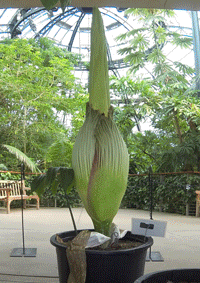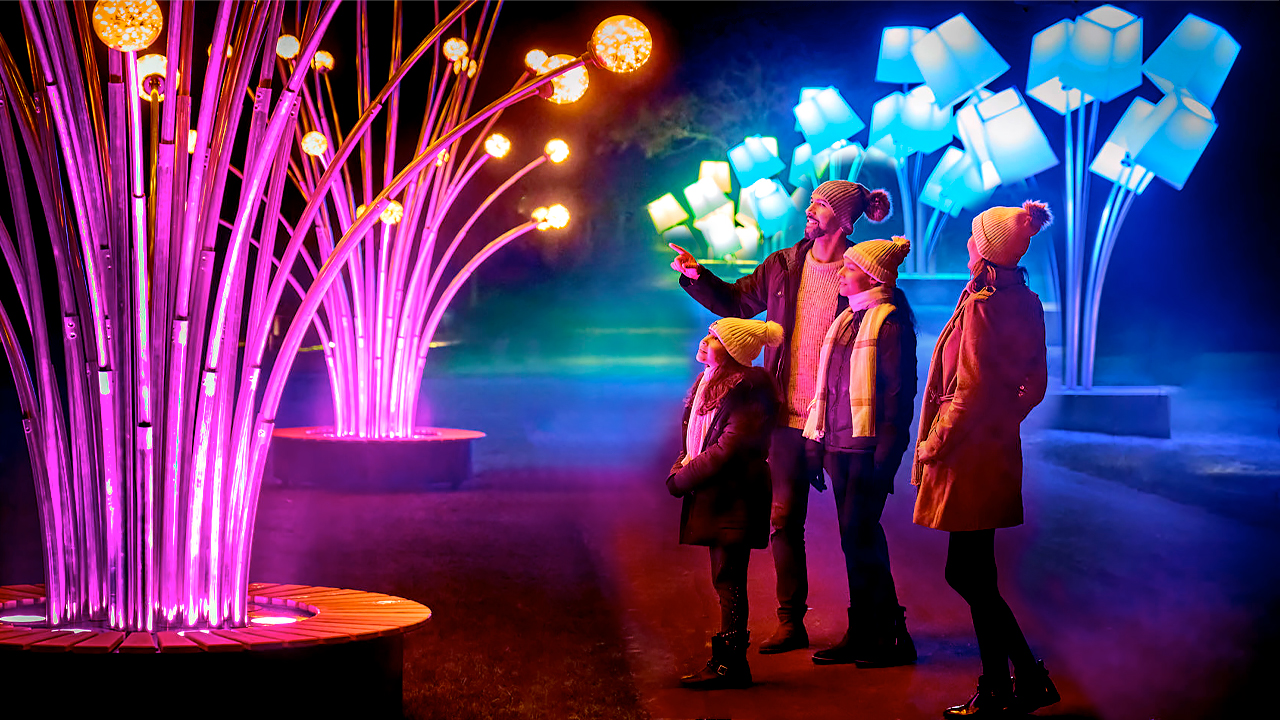Brookfield Zoo Chicago just released details of a transformational Next Century Plan that will reshape more than 100 acres (nearly half of the Zoo’s existing property) in innovative and inspiring ways for wildlife and guests.
Slightly edited to meet publication word-count, the plan blends historic structures with new animal zones. The Zoo will have immersive habitats that provide for the best in animal care while creating rich experiences for guests that engage audiences and connect to conservation.
Also in the plan is a more interesting and welcoming North Gate entrance and experience.
New North Gate
What to expect: a 15-year campus plan in four phases, with further improvements projected over 30 years. This vision balances new, immersive experiences with the preservation of historical structures and includes nearly all existing Zoo areas.
It also calls for significant westward expansion and development of current Zoo property, blending new mixed-species environments inspired by 14 global eco-regions into the existing rich forest canopy.
With an investment expected to reach $500 million from public and private funding, the plan aims to not only to transform the physical campus but also solidify the Zoo’s role as a leader in global wildlife conservation.
According to Brookfield Zoo officials and partners, the plan should make a substantial economic impact on local communities, surrounding counties, and the state, as well as bolster the Zoo as a global destination.
The first phase of the Next Century Plan has already begun. It includes completed projects, such as the $10 million renovation of the Zoo’s Seven Seas dolphin habitat, reimagining of the Theodore Roosevelt Memorial Fountain, new animal habitats within the Hamill Family Nature Plaza, and opening of the Philip W. K. Sweet Jr. Animal Care and Conservation Center with state-of-the-art new office and collaborative spaces for animal and conservation teams.
(South African Forest area in New Gateway to Africa at Brookfield Zoo)
Well underway culminating the end of Phase 1 is– Tropical Forests, a $66 million project that creates four new outdoor habitats meticulously crafted to emulate the natural homes of gorillas, orangutans, and monkeys, set to open in 2025. The Tropical Forests project also incorporates a new Gorilla Conservation Center and the Zoo’s King Conservation Leadership Academy that provides educational opportunities for teens.
Four Key Zones
The Next Century Plan provides an exciting and innovative new direction for Brookfield Zoo Chicago while weaving together elements of the Zoo’s past. Nearly half of the Zoo’s sweeping 235 acres in the Forest Preserves of Cook County will be re-imagined, expanding wildlife habitats, and transcending conventional zoo design for a fully immersive experience organized into four key zones:
- Historical Core: Preserving Brookfield Zoo Chicago’s historic features, including the iconic North and South Gates, the hand-carved Carousel, and the Theodore Roosevelt Memorial Fountain, this area will serve as a bridge between the Zoo’s rich history and its innovative future.
- Immersive Ecoregions: To the west, 14 regions will transform the Zoo into a dynamic, landscape-based experience inviting guests through portals to various parts of the world. Native animal species will anchor each deeply immersive ecoregion with environments that mimic their natural habitats, fostering an appreciation for wildlife and their ecosystems. These regions will transport guests, allowing them to experience and connect eye-to-eye with wildlife they otherwise may never have the opportunity to see. These natural habitats will provide enriched animal care and spacious, mixed-species groupings that ensure the animals’ optimal well-being.
Key project examples include:
Gateway to Africa: Leading Phase 2 of the plan, Gateway to Africa will be a 35-acre haven where guests can witness firsthand the splendor of Africa’s wildlife and natural landscapes. A multi-species habitat with 12.5 acres for elephants, alongside rhinos, lions, giraffes, and other iconic species, the transformation will provide a new innovation in animal shifting capabilities for flexibility between the various habitats, linking together four distinct ecoregions: South African Forests, African Savannah, East African Forests, and Central African Forests. This flexibility will be possible thanks to the creation of the new Savannah Passage, a half-mile-long, multi-species transfer corridor that allows for rotational habitat expansion and variety. The Savannah Passage links multiple habitats across the northwest quadrant of the Zoo, facilitating a changing landscape for the animals and guests to experience.
(Pachyderm Building in Gateway to Africa)
Also in Gateway to Africa – Pachyderm Building: The renovation of the beloved Pachyderm Building – one of the Zoo’s original structures – will reverse the current animal-guest relationship by replacing indoor animal space with exciting guest programs during the day, and private catering event space in the evening, offering expansive views to the flexible, mixed-species Savannah habitat north of the building. New animal facilities will be developed elsewhere that provide spacious indoor habitats and the best in modern zoological care.
*Southwest Australian Provinces: Guests will be instantly transported to the landscapes of Southwest Australia, venturing into scrublands with towering termite mounds and the mysterious call of tawny frogmouths, while vibrant rose-breasted cockatoos flit through the canopy. An elevated walkway will offer panoramic views of iconic species such as kangaroos and emus, and intimate encounters with koalas nestled in eucalyptus trees. Exiting through a forest portal, guests will reach the newly renovated historical Australia House, home to Tasmanian devils, wombats, and echidna in lush indoor and outdoor environments. This indoor sanctuary will showcase the rich tapestry of Australian wildlife, from tiny insects to elusive reptiles.
- Pacific Coasts of the Americas: Sights and sounds of the Peruvian coast come to life in this immersive experience. Guests are greeted by the rhythmic sounds of crashing waves and the salty scent of the ocean breeze, transporting them to the rugged shores of South America. The centerpiece, Sea Lion Cove, features a sprawling habitat where guests can observe sea lions in their natural element through rocky shores and underwater viewing windows, offering a glimpse into their dynamic social behaviors. Adjacent to the sea lion habitat, a training and education area allows care staff to share stories of conservation efforts and to demonstrate the Zoo’s excellence in animal care. The new Humboldt Penguin habitat, inspired by Peru’s Punta San Juan Marine Protected Area, showcases the playful antics of Humboldt penguins alongside free-flying terns and gulls, highlighting the region’s rich biodiversity. Interactive storytelling and environmental education sessions provide guests with a deeper understanding of the importance of protecting these endangered species and the impact of climate change on their habitats.
(New Himalayan and Central Asian Steppe)
- Himalayan and Central Asian Steppe: Tucked into the western reaches of the Zoo, this region – a part of Phases 3 and 4 that represents projects starting in 2034 and beyond – will highlight the rugged landscape that is home to snow leopards and takin. Taking advantage of natural old-growth forest on the Zoo’s property, from under a viewing trellis, guests will be able to search among the rocky outcrops to find camouflaged cats exploring their habitats. A nearly invisible barrier between the habitats will create visual continuity with the new takin habitat beyond, where these rock-climbing mammals will delight guests with their graceful movements.
- Our Rivers to the Gulf: Also in this third phase, dolphins will have a new, indoor/outdoor shallow-lagoon simulating their home range at Sarasota Bay, Florida, where Brookfield Zoo Chicago leads the world’s longest- running dolphin conservation research program. A sweeping boardwalk will immerse guests in a mangrove forest where connections between the Illinois River and conservation efforts in the Gulf of Mexico are made.
(New Rivers to the Gulf)
- Wildlife Discovery: This zone will feature expanded attractions, recreational activities and interactive experiences to engage guests of all ages with the wonders of wildlife. New habitats at the Zoo’s former Bear Grottos will feature animals, including sloth bears, sun bears, wolverines, and red pandas. Designed to create a central, communal space to attract more new and diverse audiences to the Zoo, a spacious new amphitheater situated away from animal habitats will host programs from educational presentations to musical performances, such as the Zoo’s successful Roaring Nights concert series that supports the organization’s conservation programs around the globe. Additionally, a permanent butterfly house will provide year-round opportunities for visitors to learn about the lifecycle and migration of the important pollinators.
4. Conservation Campus: Located at the Zoo’s south end, this area will be a hub for scientists, educators and conservationists, featuring cutting-edge facilities and collaborative spaces. Bringing what are typically behind-the-scenes spaces forward to the public, an indoor viewing gallery will showcase live conservation research and interactive exhibits, fostering a deeper understanding of global conservation efforts. Additionally, the expansion of the veterinary hospital and enhanced education spaces at the Mary Ann MacLean Conservation Leadership Center will provide engaging learning experiences and highlight the Zoo’s commitment to wildlife care and conservation education. The campus will provide an opportunity to further showcase the Zoo’s several programs and partnership with the Forest Preserves of Cook County and work with local wildlife species such as turtles, otters, cranes, and more.
“Our Next Century Plan reflects our core commitment as a zoo to save species and ecosystems. We inspire conservation leadership. We touch lives. We save animals,” said Dr. Michael Adkesson, President and CEO. “The plan boldly envisions the redevelopment and expansion of the Zoo’s physical campus to bolster our excellence in animal care and wellness, but our impact will also extend beyond our gates to reach local communities and global partners to provide a connection for people to develop empathy for wildlife and nature that drives positive action.”
For more information, visit www.BrookfieldZoo.org
















